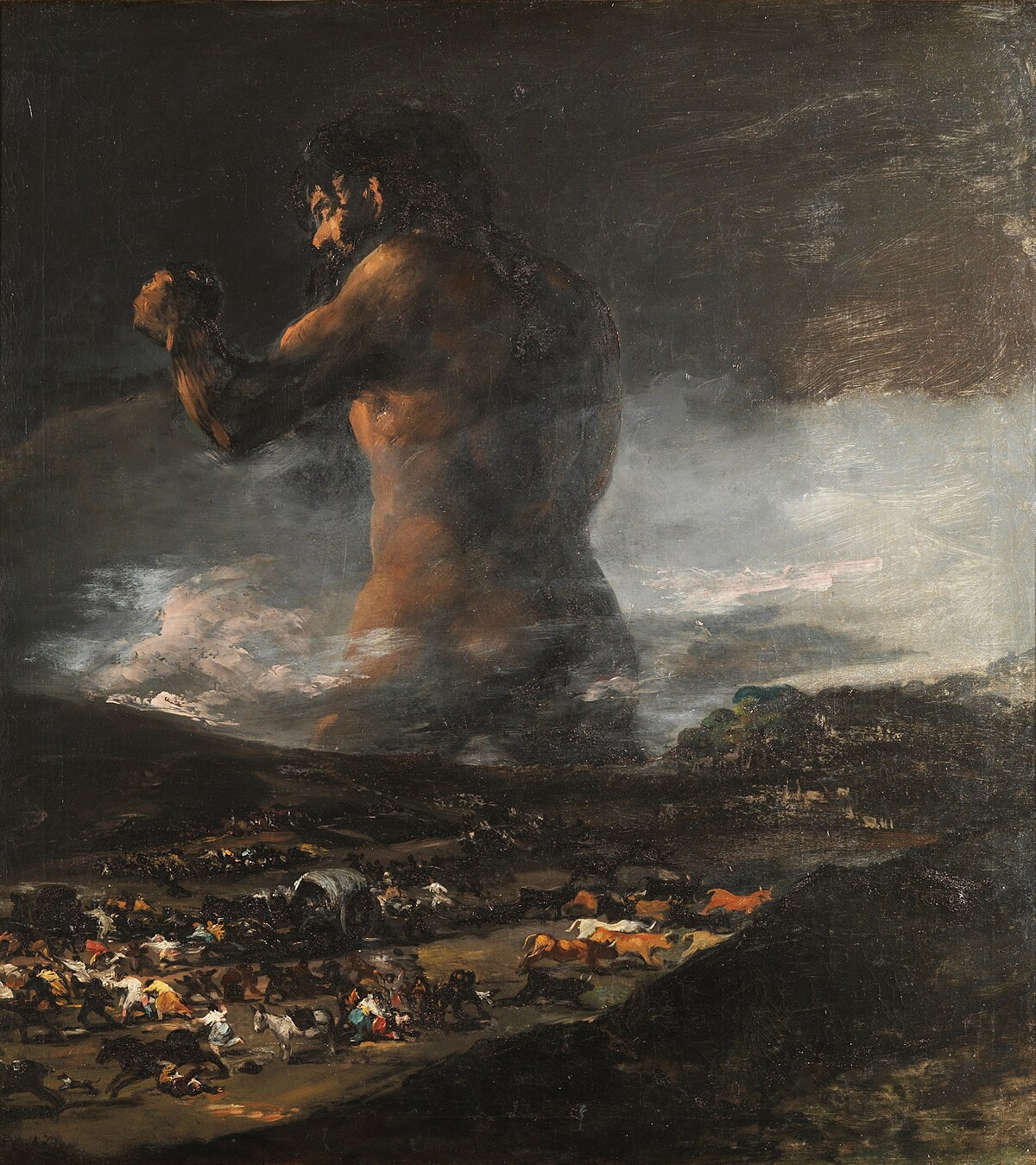Introduction
Francisco Goya, a pivotal figure in the Romantic movement, crafted a legacy that defies the constraints of time. Among his numerous intriguing works, ‘The Colossus’ holds a special place, shrouded in mystery and rich with interpretative potential. Created during a period of political turmoil and personal strife for Goya, this painting is a profound commentary on the human condition.
In this essay, we will delve into the depths of ‘The Colossus’, exploring its historical context, artistic significance, and the myriad interpretations that have surfaced over the years. We will attempt to unravel the mystery behind this giant and discover the enlightenment Goya offers through this enigmatic work.
Historical and Artistic Context
The early 19th century, the period when Goya presumably created ‘The Colossus’, was marked by the turmoil of the Peninsular War and the subsequent societal upheaval in Spain. This backdrop is crucial for understanding the painting’s thematic underpinnings. Goya, experiencing both the horrors of war and personal afflictions, channeled his responses into his art, creating works that were introspective, critical, and often darkly symbolic.
‘The Colossus’ is no exception. While its exact date of creation is debated, its themes align closely with the turbulence of Goya’s Spain. The painting is not merely a reflection of external chaos but also an exploration of internal human fears and aspirations. It’s a testament to Francisco Goya‘s ability to transcend the role of an artist from a mere recorder of events to a profound commentator on the human experience.
Symbolism in ‘The Colossus’
At the heart of ‘The Colossus’ lies a rich tapestry of symbolism, open to varied interpretations. The giant dominating the landscape can be seen as a metaphor for the overwhelming forces of nature or war, dwarfing the human figures scattered in the foreground. Some interpret the giant as a representation of political power, oppressive and distant, or as a symbol of the collective spirit of resistance against adversity.
The composition of the painting itself is a subject of intrigue. The juxtaposition of the colossal figure against the tiny, scurrying humans illustrates the theme of helplessness and the insignificance of individuals against larger-than-life challenges. Goya’s use of light and shadow, the positioning of the giant, and the reactions of the people and animals in the scene all contribute to an atmosphere of awe and apprehension, highlighting the painting’s central themes of power, fear, and survival.
Artistic Techniques in ‘The Colossus’
Goya’s artistic mastery in ‘The Colossus’ is evident in his handling of various elements. The dramatic scale difference between the giant and the landscape is a powerful visual tool that Goya employs to communicate the overwhelming nature of the forces represented by the giant. The use of chiaroscuro, the contrast between light and dark, serves to heighten the emotional impact of the scene, creating a sense of impending doom.
The composition of ‘The Colossus’ also speaks volumes. Goya places the giant off-center, dominating yet not entirely engulfing the landscape, perhaps symbolizing that, despite the overwhelming nature of the challenges depicted, there is still room for human agency and resilience. The muted palette, dominated by earthy tones, further adds to the somber and unsettling mood of the painting.
Reception and Interpretation Over the Years
Since its creation, ‘The Colossus’ has been a subject of intense scrutiny and diverse interpretations. Initially, it was seen as a depiction of the Spanish resistance against Napoleon’s invasion. However, over time, interpretations have evolved, with some viewing it as a representation of the futility of war, while others see it as a broader symbol of human struggle against overwhelming odds.
The ambiguity in ‘The Colossus’ is one of its most compelling aspects, allowing it to resonate with audiences across different eras. Each generation finds its own meaning in the painting, reflecting their unique societal challenges and fears. This enduring quality makes ‘The Colossus’ not just a historical artifact but a living piece of art that continues to engage and provoke.
Contemporary Relevance and Conclusion
In today’s world, ‘The Colossus’ remains as relevant as ever. Its themes of overwhelming force, human frailty, and resilience in the face of daunting challenges continue to echo in our contemporary experiences. Whether viewed through the lens of political, environmental, or personal struggles, the painting offers a timeless reflection on the human condition.
In conclusion, Francisco Goya’s ‘The Colossus’ is a masterpiece that transcends its historical context to offer insights into universal human experiences. Its blend of mystery and enlightenment continues to captivate and inspire, reminding us of the enduring power of art to reflect, challenge, and transform our understanding of the world.



